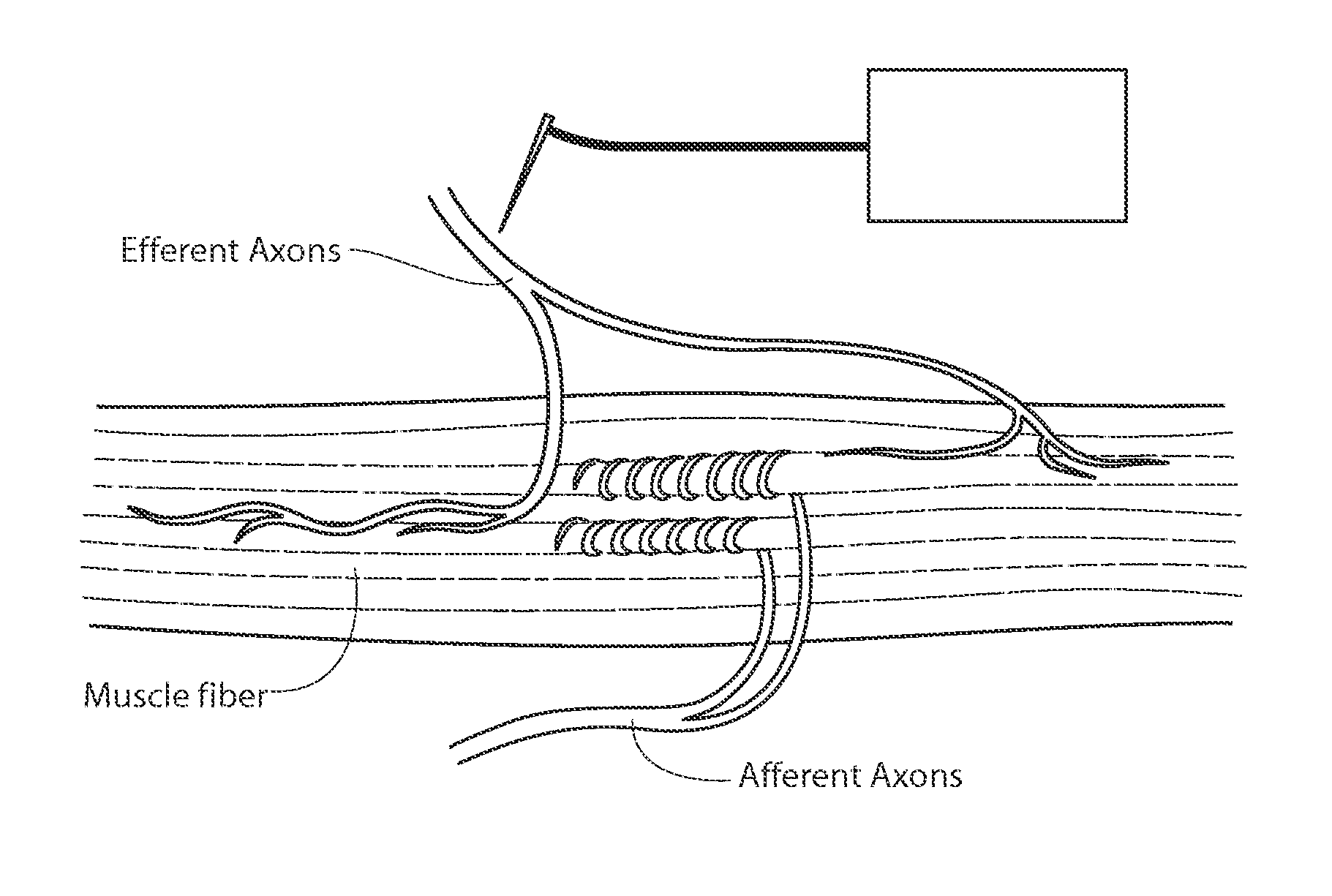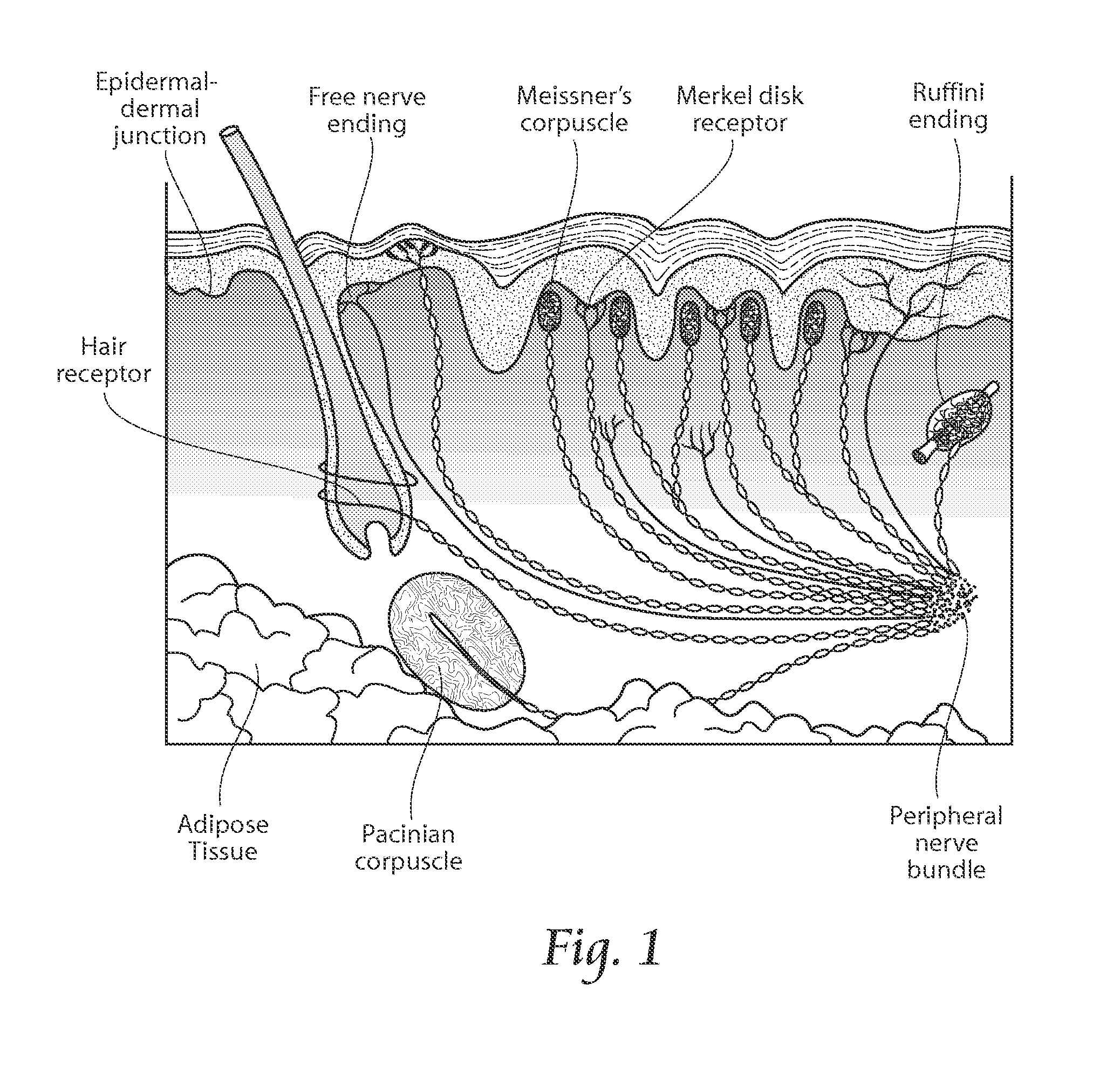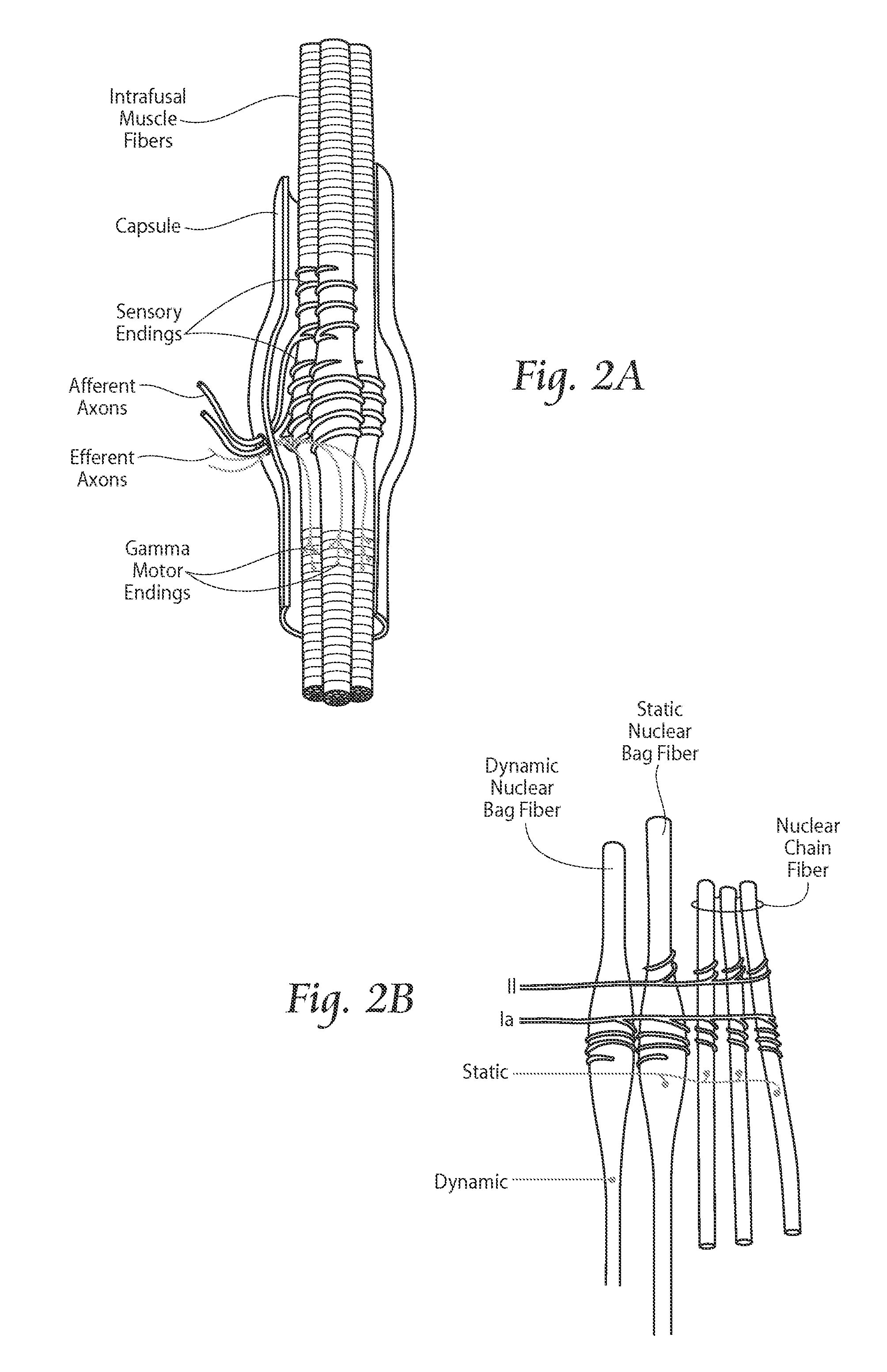Systems and methods for the treatment of pain through neural fiber stimulation
a neural fiber and nerve fiber technology, applied in the field of bodily pain relief in animals, can solve the problems of not being able to effectively perceive pain, many issues and the need for improvement, and the limited use of the available system, so as to reduce the perception of pain
- Summary
- Abstract
- Description
- Claims
- Application Information
AI Technical Summary
Benefits of technology
Problems solved by technology
Method used
Image
Examples
Embodiment Construction
[0042]Although the disclosure hereof is detailed and exact to enable those skilled in the art to practice the invention, the physical embodiments herein disclosed merely exemplify the invention, which may be embodied in other specific structures. While the preferred embodiment has been described, the details may be changed without departing from the invention, which is defined by the claims.
[0043]As described in the Background section, above, the nervous system of an animal generally comprises efferent and afferent neural fibers, and prior pain reduction modalities have focused on action potential generation or activation in non-nociceptive afferent neural fibers to inhibit, or “close the gate” to, the transmission of nociceptive pain signals to the brain. This has come to be known as the gate control theory of pain management. Most afferent fibers, however, are not bundled only with other afferent fibers; rather, the majority of nerves found amenable to peripheral nerve stimulation...
PUM
 Login to View More
Login to View More Abstract
Description
Claims
Application Information
 Login to View More
Login to View More - R&D
- Intellectual Property
- Life Sciences
- Materials
- Tech Scout
- Unparalleled Data Quality
- Higher Quality Content
- 60% Fewer Hallucinations
Browse by: Latest US Patents, China's latest patents, Technical Efficacy Thesaurus, Application Domain, Technology Topic, Popular Technical Reports.
© 2025 PatSnap. All rights reserved.Legal|Privacy policy|Modern Slavery Act Transparency Statement|Sitemap|About US| Contact US: help@patsnap.com



